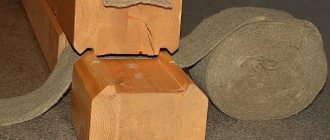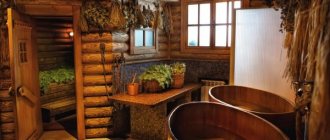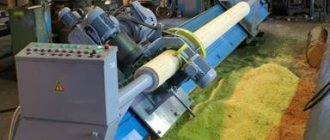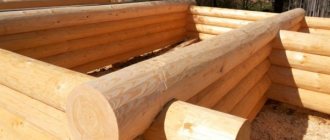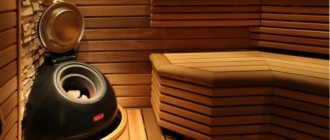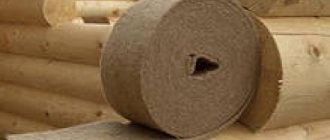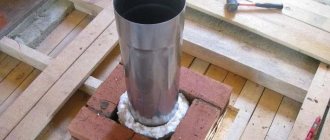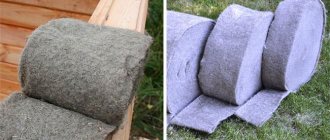Building a bathhouse is quite an expensive proposition, so you need to immediately build a reliable structure that will last for many years. Materials for building a bathhouse must be chosen carefully. The main materials from which saunas are built are logs, beams and bricks. And the final choice must be made based on the capabilities of these materials, features and positive characteristics.
Which interventional insulation should I choose for a bathhouse? Which one is the best? Jute, flax, tow, moss? We will try to answer this question in this short article. At the same time, we will make a brief overview of the various designs of baths.
Materials unsuitable for insulation
Option #1 - mineral wool
Ordinary mineral wool also cannot serve as a heat insulator for timber in any way - its threads have moisture absorption close to zero. All the moisture in this material is retained by the tension of the fibers and does not disappear anywhere. In addition, this material allows heat to pass through and even creates a dew point when lighting a bath. And yet, unscrupulous builders sometimes manage to use it.
Option #2 - isover
As for Izover, which has recently become incredibly popular, in those places between the rims where there is no gap, it is compressed almost 100%, and here its heat transfer is somewhat less than that of other material under the same conditions. But in the gaps, Izover is a little fluffy and copes quite well with its functions as a heat insulator. On the other hand, Izover’s ability to absorb and remove moisture is almost the same as that of many other inter-crown insulation materials, but this material does not burn, does not rot, does not need to be caulked, and over time it does not crumble like dust. Unpleasant dust can be eliminated with a sealed finish.
So, let's summarize. This is what Izover is preferred by many as an interventional insulation:
- Doesn't burn, doesn't rot;
- Convenient to use;
- It compresses well and leaves no gaps;
- Birds don't like it;
- Does not require additional caulking.
But this fashionable material also has a significant drawback: it is not very environmentally friendly, and when slightly torn, it emits caustic and allergic dust. It also quickly accumulates moisture... And many lazy builders convince future owners of bathhouses to use this inter-crown insulation - after all, it’s much easier for them to work: it cuts easily, just rolling out over the log, construction goes quickly and costs are less. That is why, despite advertising from neighbors, not many people want to install Izover in the walls of bathhouses - especially those who saw it in use: even with dry timber, the insulation turned out to be 2/3 wet.
Also, similar synthetic materials often serve as a dangerous source of phenol. So, let’s conclude: mineral wool in a compressed state does not remove moisture at all, and Izover, if not covered with a vapor barrier, completely turns into a sponge. The decision is yours.
Option #3 - polyurethane foam
Polyurethane foam is also used as inter-crown insulation. It is valued for the following properties:
- Fast technological installation.
- Good adhesion, thanks to which the timber sticks tightly together. When drying, it will not twist, and the steam room will not warp.
- Foam seals corners in a log house much better than moss or tow.
- Hardened one-component foam is not flammable and does not emit toxins, which, however, multi-component foam cannot boast of.
- The process of caulking after foaming is quite simple.
But with all its advantages, foam as an interventional insulation does not please with the following qualities:
- It is not elastic, which is why microcracks may appear over time (and wood, like any living material, can slightly change its volume).
- In winter it does not tolerate the cold well - it crumbles.
- Less resistant to ultraviolet radiation. Over time, it turns to stone and discolors from the sun.
- Not environmentally friendly enough.
And, let us note that polyurethane foam is used relatively little today as inter-crown insulation, and therefore many other negative consequences of such insulation are not yet known. But the foam itself is also used as inter-crown insulation in the following alternative:
- Option #1. The beams are laid half a meter apart, and after construction is completed they are foamed. This way it supposedly dries faster, and then the remaining wide gap can be foamed. Fast, airtight and no caulking required. From the inside of the bathhouse, the cracks are caulked with linen rope.
- Option #2. Before using the foam, allow the bathhouse to sit completely on the tow. After all, the settlement of the building occurs due to the shrinkage of the timber itself - and this is at least a year and a half. After that, a 5-centimeter gap is punched in the tow and the groove is foamed, and finally, the seams are protected with sealant.
As for the choice of foam brand, “Macroflex Pro” is so far most suitable for this purpose. In a word, there is a lot of material, and, as they say, as many people as there are so many opinions. There are also bathhouse owners who built their steam rooms ten years ago and are quite satisfied with Izover as a sealant. They claim that after rains the timber will be wet in place of the insulation, regardless of the type of insulation: it is moss or a modern material. And the main advantages become the decisive factor: it is cheap and easy to build.
It’s just important not to take the cheapest Izover (it’s also called Chinese) - you can really get poisoned from it
Lnovatin
Depending on the manufacturing technology, it may be called differently. Refers to quilted fabric (made using the needle-stitching method).
- Good hygroscopicity;
- Easy to install;
- Prevents fungal activity;
- Good sound insulator;
- Environmental friendliness;
- Cost-effective;
- Almost no re-caulking is required.
- The moth "chicks".
Carefully! When purchasing this product, pay attention to the structure. If you notice very short fibers, trimmings of thread, twine and inclusions of other colors, you know that the material contains recycled products. For example, recycled bags, rags, etc. This is not entirely good. Such insulation will be fragile. And besides, it is unknown under what conditions the processed products were used.
What types of inter-crown insulation are there?
Let's start with the fact that they are natural and synthetic, and each group has its own pros and cons.
Which interventional insulation should I choose?
Table. Types of inter-crown insulation.
Name, photo Brief description
Synthetic These are materials that are made from polyester fibers. Completely safe, meet all existing requirements and standards. They have all the advantages of natural materials. The cost of synthetic fibers is average.
Wool felt Expensive insulation made from wool. It must be treated with high-quality antiseptics so that insects do not breed in the wool. It has excellent heat saving properties and is able to restore its original thickness (due to this, heat loss is further reduced). At first, felt may have a characteristic odor, but over time this problem disappears.
Jute is popular in warm regions; it is distinguished by the fact that it contains lignin - a fairly good antiseptic. The heat insulator almost does not rot, and therefore is used even in shipbuilding. Repels rodents, insects, birds. There is only one minus - the fibers stick together over the years, which is why the material sags and loses some of its thermal insulation properties. As a result, you may need another caulk, and this is difficult and time-consuming.
Linen jute Consists of an equal amount of jute and flax fibers, due to which the insulation has the best qualities of both materials - it has antiseptic properties and is plastic. It can be used not only for decorative caulking of houses, but also for creating ropes. As for insulation, jute felt can be used for this - a material that contains only 10% flax. In this case, before pressing, the fibers are cleaned and mixed with each other.
Non-woven fabric Quite an expensive material, which is made from high-quality flax. Its thickness varies between 5-8 mm, and its width can range from 8 mm to 200 mm. The variation in parameters is explained by the lack of uniform standards; each company has its own sizes. The material is easy to work with; when selecting the width of the tape, the dimensions of the timber are taken into account. The disadvantages are the tendency to rot, hygroscopicity, and the fact that the material attracts insects and pests. To eliminate these disadvantages, manufacturers sometimes treat the canvas with an antiseptic, but the cost of such material will be much higher.
Flax Traditionally, houses were insulated with tow, a waste product from flax production. The material is natural and hygroscopic, its absolute humidity reaches more than 500 percent, which is undoubtedly a serious drawback of flax. Tow is laid in several layers, with obligatory caulking
Dry flax is very flammable (it can catch fire from a spark), so you need to work with it carefully.
Moss A kind of classic that is hardly used today. Moss is dried for several months before use, and it should only come from wetlands
It contains phenolic acids - it is an effective natural antiseptic. Wood under such insulation does not rot. The material is laid in several layers with a total thickness of 3 cm to 5 cm. Moss, which is used for insulation, comes in two types - “cuckoo flax” and sphagnum.
Moss for insulating the crowns of timber How to choose the desired density of jute? Drilling holes for dowels
It is also better not to use synthetic insulation for residential buildings, even if manufacturers claim otherwise. Such materials emit various chemicals, albeit in quantities that are safe according to government standards (and such standards do not always meet the requirements of buyers).
Another disadvantage of all artificial materials without exception is that they do not allow air to pass through. As a result, the wood at the joints does not “breathe” and does not dry; due to accumulated moisture, service life and strength are reduced. Of course, the insulation itself will last for many years, as the manufacturers assure, but the log house will not last long.
Artificial insulation "Avaterm"
Often sellers sell synthetic materials under the guise of natural materials. The truth is easy to find out - set fire to the insulation, and if the smoke is black and has a strong unpleasant odor, then it is artificial. But when natural materials burn, much less chemicals are released. In short, synthetic insulation is only suitable for baths, where it is better not to use natural insulation due to high humidity.
Jute tow
Jute tow is 100% made from jute. On the one hand, this is its significant plus, on the other hand, it is a minus that can become a problem when working with insulation. The fact is that jute tow itself is very rigid, which complicates the process of laying it on the work surface. It is for this reason that jute tow can most often be found with some additions of flax, which softens the insulation.
On the other hand, jute tow is most often produced in the form of rolls (tape), the thickness of which is ideally selected. It is for this reason that the tape is easy to install, and during its installation we will not have problems with level differences in a certain inter-crown crown of a wooden house. In turn, when choosing the width of the tape, we can take a larger value, which will allow us to place it with a slight overlap inside and outside the bath. This will be useful to us at that moment in time when the wooden structure shrinks.
Note that jute itself is not afraid of moisture. In addition, jute tow is an example of secondary production, which makes its cost very low and even budget-friendly. That is why any owner of a wooden bathhouse in our country can afford to use jute tow.
Advantages of jute as inter-crown insulation for a bath:
- the composition of jute is very close in composition to wood - logs, timber, lumber;
- environmental purity of natural jute;
- good thermal protection performance;
- durability.
Modern interventional insulation
Among the newest materials, there are many reviews about Eurolena - supposedly it was what they used to assemble the president’s house. They make it in Finland, and of different types: the more expensive one will never rot, no matter how wet it gets, and the second one can be used exclusively with dry timber. With damp wood it turns black and turns into dust. The new Finnish inter-crown insulation PP-TERMO is also attractive for its quality. Here are its competitive advantages:
- Resistant to mold and various microorganisms, does not rot.
- It has low water absorption and is therefore always dry. This, in turn, significantly increases the service life of the wood.
- It is not pecked by birds - it is simply difficult for them to reach.
- Fire resistant - even has a corresponding certificate.
- Does not require caulking - after drying, the log quickly restores its volume and fills all cracks and gaps on its own.
It also has an unlimited service life - almost forever.
Plant fibers or tape material
Plant fibers are often more affordable in terms of cost, but they require more installation time.
Plant fibers are more environmentally friendly, but have a shorter service life compared to synthetic materials.
Reference. A separate article is devoted to foil materials used as insulation for ceilings and walls.
Interventional insulation, time-tested
Option #1 - jute and its derivatives
The most popular today is jute, a southern plant from the linden family that grows in warm and humid countries. It is more expensive than linen, but also of higher quality. Its most valuable advantage is its amazing hygroscopicity. Jute itself is closest in its properties to wood: it is durable, hygroscopic and consists of 20% lignin polymer, which determines its resistance to moisture. For comparison: coniferous species have only 24% lignin. The only point: when used in bathhouses made of laminated veneer lumber, the width tolerances should be minimal: only 1-2 mm.
The color of jute is quite pretty - light golden, and it looks great on the walls of a bathhouse. But some manufacturers, for the sake of profit, also add flax fiber to this material, which is why it significantly loses quality. You can spot this catch right away - the grayer and softer the jute, the more flax it contains. Avoid this purchase. So what's wrong with flax in jute? The fact is that pure jute has a surface density of 400-800 g per square meter. The caking of the insulation and the uniformity of shrinkage of the bath directly depend on this indicator. Flax has much less density. The second important point: when installing dowels, pure jute does not wrap around the drill.
Option #2 - tape insulation
Tape inter-crown insulation for profiled timber is especially convenient to use: environmentally friendly and natural. You will purchase it in the form of a tape, and the store will immediately offer you different lengths and thicknesses. Why? Because the beams come in different parameters, you will need to make the necessary measurements in advance. This insulation should be used as follows: we bend the strips lengthwise and place them between the crowns so that the folded edge is inside the house. Leave 5 mm to the edge of the beam - this way you will get beautiful bathhouse walls with even sealing seams. And yes, lay the tape tow in 2 layers.
Material such as flax wool is also becoming popular. Its qualities are similar to jute, but it is cheaper. The seam is smooth, and there is no additional need to sheathe the internal walls. This is an environmentally friendly insulation material for profiled timber and rough logs, which “breathes” and provides fairly effective thermal insulation. Moreover, birds usually do not like it.
Option #3 - good old cuckoo flax
And to this day, many builders remain faithful to the “real Russian interventional insulation” - moss. They only recommend putting it in large quantities, without sparing, removing all the cones and branches from it. If you took it too dry, you can safely wet it before use, so it will wrinkle much better. And finally: today wool is practically no longer used in construction - it has too many disadvantages.
Moss
Photo: Cuckoo flax moss is most often used for the construction of baths. This is one of the best options when choosing inter-crown insulation.
In the process of insulating wooden houses and bathhouses, moss has been used for a very long time. At the same time, today only two varieties of moss are known and most relevant, which can be used in construction. Their names: cuckoo flax and sphagnum moss. Externally, they differ in color, feel different to the touch, and differ in the structure of the petals. However, they have one common and very important operational property - they can be an antiseptic for lumber.
Photo: sphagnum moss is also used to build baths
Actually, antiseptic properties mean, first of all, the protection of wood from the effects of harmful microorganisms, which can lead to the complete destruction of lumber, teak and its darkening, which will make the tree unattractive. Note that sphagnum moss has a greater antiseptic effect. This is the so-called white moss, which is laid on each subsequent and previous crown of a wooden house in a correctly selected layer. To be honest, it can be difficult to choose the thickness of moss, since this requires some experience.
In turn, cuckoo flax also has an antiseptic effect, but in a slightly lesser form. However, it tolerates moisture well, which allows it to be used no less than a wooden house will serve. Note that this insulation has its antibacterial effect due to the sap that it releases onto the surface of the tree when it is pressed by the upper crown of a wooden house. By the way, it is for this reason that cuckoo flax and sphagnum moss should only be laid when wet.
As practice shows, this type of insulation requires additional protection using a sealant. In addition, at the time of laying it cannot be released outside, since everything that “sticks out” from the crowns of a wooden house will be stolen by birds to build nests. This means that after the wooden structure shrinks, we will have to caulk the walls using already dry moss or another type of insulation.
Advantages of interventional insulation – moss:
- unique environmental qualities;
- high heat-protective qualities;
- excellent antiseptic protection of inter-crown grooves (sutures);
- a unique forest smell inside the bathhouse;
- durability.
What is a good insulation
The main purpose of interventional insulation is not only to prevent heat loss, but also to create a comfortable and favorable microclimate indoors, so it must have the following characteristics:
- reliably protect the building from drafts and frost;
- have sufficient density and elasticity so that cracks do not form in it during operation;
- have good vapor permeability and moisture absorption ability;
- do not contain substances or impregnations harmful to the body;
- do not contribute to the proliferation of microorganisms and fungal spores;
- have resistance to the effects of negative factors;
- do not change its performance properties over a long period of time.
Intercrown insulation will keep your wooden house warm and cozy
In addition, when choosing an interventional beam, you should take into account the qualities and features of the material from which the building is constructed, as well as its main purpose - a residential building, a bathhouse, an outbuilding.
conclusions
As you can see, these insulation options have quite a lot of advantages. However, the question of which one to choose has still not been resolved. Basically, it's up to you to decide. But, as a little advice, we want to draw your attention to moss, since its use can protect your structure from significant problems. Unfortunately, this cannot be said about jute tow (despite all its positive qualities), which means that this type of inter-crown insulation should be used if you do not want to assemble the frame of your bathhouse with moss. But this is our conclusion and many believe that inter-crown jute can be confidently placed in 1st place when choosing a gasket for the grooves of a log or cobblestone bathhouse. We will not argue with this, since we consider inter-crown jute, along with moss, to be a very good choice as a natural insulation between the crowns of saunas and baths.
What is suitable for bath walls
For a bathhouse, you can only use inter-crown insulation that allows moisture to pass through without accumulating it at all - these are all materials with a capillary fiber structure. Moss, jute, flax and some of their derivatives. Yes, only natural materials have such properties! But all synthetic ones always accumulate moisture, which is why the wood then rots and the seams are not ventilated at all.
Experienced builders, who have built more than one wooden bathhouse or house behind them, advise choosing inter-crown insulation not based on advertising, and not based on the success of its use among neighbors - but solely on a case-by-case basis. In some places, foam plastic is indeed necessary - there are such construction technologies, but for most buildings it is completely unsuitable.
So, what you first need to pay attention to is the density of the insulation. For massive baths made of profiled timber, an insulation thickness of 3-4 mm is sufficient if its density reaches 300-400 g/m2
But for steam rooms made of heavy rounded logs, this figure is already different - 4-5 mm, and the density should be at least 500-600 g/m2. For a bath house with two floors, focus on 8-10 mm thickness and 700-800 g/m2 density. But this is where problems can arise: if the seal has a density of 300-400 g/m2, but it is placed at 6-7 mm, expect “bald spots” soon. Reliable insulation will not work here. If the sealant is applied by 5-6 mm, but its density is from 700-800 g/m2, this is already “stuffed too much”. So, after the building shrinks, the material will not be able to evenly fill all possible unevenness of the beams.
So, what insulation should you use? It depends not only on whether you bought the wood wet or dry, but also on the processing of the wood itself. So, for a bathhouse made of rounded logs and profiled timber, the following natural materials with a layer of 5-10 mm will suit you:
- Flax-jute;
- Jute felt;
- Linen felt.
And for a chopped bath, use 10-15 mm:
- Linen felt;
- Jute felt;
- Construction tow, sold in bales;
- Ribbon linen or jute tow;
- Moss.
That's all the subtleties. Understand this issue well before building a bathhouse - the quality of its walls directly depends on this!
What to put between the crowns?
To create a gasket between the crowns of a log house, there are many insulating materials. But not all of them are ideal for these purposes. First, you need to safely cross out synthetic and artificial materials from the list of candidates for inter-crown insulation. They will cope with the thermal insulation task well, but the price of their work will be damaged crowns of the log house. Artificial materials allow air to pass through well only when they are in a fluffy form, and when they are compressed by logs, they cannot do this, which will negatively affect the wood; it may begin to rot.
There is another drawback to these insulation materials - they are made from non-ecological components. And it seems to me that many people choose wood for construction in order to be closer to everything that is clean, safe and natural. The use of artificial, synthetic insulation will disrupt the entire beneficial microclimate of the room. It is for these reasons that I do not recommend focusing your attention on these insulating materials.
And it is advisable to lay insulation between the crowns from natural materials, which consist of fibers of natural plants. They also have good thermal insulation characteristics, but they are in perfect harmony with the wood and do not cause any harm to it. Among such materials are:
- Moss.
- Jute.
- Tow.
Many builders cannot make the final choice of insulation, deciding which of these three materials is better.
New generation insulation materials
Modern insulation materials are reliable and high-quality materials that have all the positive properties of natural fibers, but with the disadvantages characteristic of flax, jute, wool, etc. they don't have. The only drawback of such materials is the fairly high cost, as well as the fact that they have not yet stood the test of time.
ThermoJUTE and thermoLEN
ThermoJUTE
Materials called thermoJUTE and thermoLEN are made from jute or flax fibers with the addition of fusible biocomponents. Under the influence of heat, they melt and firmly bind natural fibers together. Thanks to this, they keep their shape and compress well, and also retain heat well, do not accumulate moisture and do not allow the proliferation of harmful microorganisms. Laying thermo-JUTE and thermo-FLAX does not require additional insulation (caulking) of the walls after complete shrinkage of the building.
ThermoLEN - interventional linen insulation
ThermoLEN. Density 20 kg/m3
Holofiber
Holofiber is a modern polyester material, which is a springy fiber. It “adapts” well to wood, which, like any natural building material, constantly changes shape and volume. This is especially true when building houses from non-profiled timber without grooves - in this case the logs do not fit tightly together, so even after several procedures for insulation and caulking, cracks may appear in them. Holofiber ensures a tight fit of the logs, eliminating the need for repeated caulking. In addition, such insulation does not retain moisture and is not susceptible to negative factors.
Holofiber
Holofiber nonwoven material
Video description
This video describes the correct caulking of a wooden log house:
Before caulking the timber, the cracks must be cleaned of dust and dirt, treated with antiseptics and anti-rot solutions. Work begins with the lower crown on the outside - the junction of the first and second logs. Then you need to go around the house in a circle, sealing the same lower crown. The next stage is to repeat the procedure from the inside. Only after this can you move on to the next crown. If flax or jute is used, they can be fixed with a construction stapler.
Stretch
Stretch caulk is a way to seal small and narrow cracks. These occur between loosely fitted logs of a log house. A caulking chisel with a flat and not sharp blade is used.
The tool needs to be chosen correctly Source remontnik.ru
The tow for the log house is distributed into two long strips for each crack. One, 9-10 cm wide, is stretched along the crack and hammered into it. The edge of the strip is left hanging freely. A second ribbon of fiber is woven into it and a roll is formed. The resulting structure is driven inside the gap so that it completely occupies the space.
The method is suitable for all types of natural and artificial fibers, but is not suitable for caulking with moss. Narrow cracks are completely sealed, but in wide cracks the caulking will not hold. The effectiveness of the work is checked simply - you need to pull on any part of the fiber. It should not be removed from the slot with normal force.
How to choose interventional insulation
The main qualities that an inter-crown insulation based on flax or jute, be it tape tow or inter-crown felt, must satisfy during external inspection are a uniform, sufficiently high density and the absence of foreign inclusions (fires, threads, etc.)
It is important that the insulation is made from natural “raw” fiber, and not from recycled jute and linen sacks
When asked which of these two materials is better, experts do not give a clear answer. For many years now, disputes between supporters of flax and jute inter-crown insulation have not subsided.
Jute is stiffer and more brittle, its fibers are much shorter than flax fibers, so pure jute insulation is difficult to make sufficiently uniform - but this is a problem for manufacturers. But it is somewhat better than flax, protected by nature from rotting. Many are inclined to believe that a mixture of flax and jute is exactly what is needed.
It should be noted that thermal insulation materials usually used for insulating walls and ceilings, such as mineral wool, basalt wool, polyurethane foam or foam rubber, are not suitable for inter-crown insulation of wooden houses. Compressed under the weight of the crowns, they lose their thermal insulation properties and become vapor-tight, which means that moisture will inevitably accumulate between the crowns and rotting will begin.
However, there are synthetic tape insulation materials specially designed for inter-crown insulation during the construction of wooden houses. It’s interesting that in Finland - how spoiled Finns love everything natural! — synthetic felt is widely used as inter-crown insulation. Is it because bacteria and fungi do not settle in this synthetic material with good heat-saving properties?
Tape inter-crown insulation can be used in the construction of wooden houses of various types:
- houses made of rounded logs or profiled timber with a traditional longitudinal groove, an internal (hidden) longitudinal groove or several grooves of various shapes and sizes;
- houses made of construction timber;
- log houses made of sanded logs.
This is done very simply. The insulation strips are folded along the long side and laid between the crowns of the log house, slightly short of the edges. The number of layers and thickness of the canvas are chosen based on the quality of the building material. If the timber is damaged, uneven or damp, then two layers of thick sheeting will be needed, possibly with additional inserts in the voids.
Correctly selected and well-laid inter-crown insulation is an important, although not the most noticeable, detail in the construction of a wooden house, making it warm and durable.
Log baths
Log baths were built by our grandfathers back in the last century. Now they are no less popular. A sauna built from logs is environmentally friendly. External and internal decoration of the walls can be done at will, although they already look good. It is advisable to build a columnar or strip foundation for a log bathhouse, you need to look at its dimensions and the weight of the wooden material.
The disadvantages of building a bathhouse from logs include the fact that it will be necessary to insulate the walls and caulk. And also the fact that it will be impossible to cope with heavy logs alone; you will need to use special equipment. And cutting out corner joints is not easy.
But still, a log bathhouse is a good, one might say the best, option in terms of ecology.
Combined insulation materials
Interventional insulation of a combined type is made from a mixture of jute and flax or jute and felt. The fiber ratio can be 50/50, 70/30 or 80/20, with materials containing a large amount of jute being considered the highest quality. Insulation materials with the addition of large amounts of flax are prone to rotting and have low (compared to jute) heat-saving characteristics.
Lnovatin
Lnovatin
Linen wadding is a non-woven material produced in a factory using needle-punched machines. The flax fiber is combed well, folded into several layers and the fibers are mixed together with special needles. In addition, there is a quilted version of this material, which is stitched with cotton or polyester threads. Linen wadding is less dense, that is, it has fairly low thermal insulation properties. Stitching the material with threads also does not add quality characteristics to it, since cotton rots quickly. If you plan to use flax wool for insulation of wooden log houses, you should choose a material with a density of at least 500 g/m2.
Intercrown linen insulation
Felt made of jute and linen
Insulation made from a combination of jute and flax is a more reliable material, since due to the presence of jute fibers it is hygroscopic and resistant to negative factors. It can consist exclusively of flax (the so-called Euroflax), and also contain a certain percentage of jute.
Eurolen
The fiber ratio can be 50/50 or 90/10: materials with a high jute content have excellent performance characteristics, but at the same time they are quite stiff and crumbly. Flax additives bind fibers well and give them elasticity. The quality of felt is largely determined by its appearance: the material must be homogeneous, dense, without lint or broken threads.
How to choose natural and combined insulation materials?
To reduce the cost of the material, some manufacturers fluff the fibers, which significantly reduces its density. In order not to pay money for air, when purchasing inter-crown insulation, you need to take into account its main characteristics (length, width, weight), based on which the required density is calculated. It is directly proportional to the weight of the material (measured in grams) and inversely proportional to the width and length (meters). The obtained value is compared with that indicated on the packaging: with a thickness of 5 mm it should be about 400 g/m2, with a thickness of 8-10 mm - 600 g/m2, 15 mm - 800 g/m2. You should not save on purchasing insulation with good characteristics, since it is the weakest point of a wooden frame.
Brick baths
Brick is an environmentally friendly material, but only in addition to being decorative, because various additives are used in its manufacture. Of all the existing bricks, choose lightweight varieties with existing voids inside; baths made of such material will last a long time. The main advantage of brick buildings is their fire resistance and resistance to biological damage. You can build a brick bathhouse on several floors; it will be stable and can be erected easily and quickly.
The disadvantages include the high cost of a brick; building a bathhouse from it can cost several times more than a wooden one. In addition, it is necessary to carry out interior finishing; it is advisable to cover it with clapboard or linden boards. The structure of a brick bathhouse is heavy, so you need to build a powerful, strong strip foundation, which requires significant financial costs. Brick also has good thermal conductivity, so all walls must be carefully insulated.
Specific answers from a log cabin expert:
1) Which moss is best to use for assembling a log house from logs and timber? The best two types are sphagnum and cuckoo flax.
2) Which moss is better to buy for a wooden frame - red, brown or white? For a log house, it is best to buy “cuckoo flax” moss, and for a bathhouse, white marsh moss “sphagnum” is better.
3) What kind of moss is best to choose for a wooden bath? As already mentioned, “cuckoo flax” moss is well suited for a wooden log bathhouse.
4) Is it possible to use moss to caulk a bath? For caulking, it is better to buy long-fiber moss “cuckoo flax”.
5) Is bog moss or bog moss best used for laying chopped logs in a log house? In this case, it is better to choose swamp moss.
Insulation and sealing
The material that is laid between beams or logs during the construction of a log house works to reduce heat transfer.
The individual elements that are used to seal the joints from the outside after construction are not so much thermal insulators as sealants. They perform the function of wind and moisture protection, reduce convection heat transfer and, if possible, decorate the exterior and interior. Sometimes it makes sense to use different materials for insulation and sealing.

